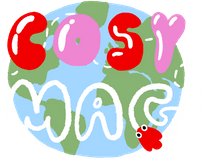The experience of a centennial is never truly complete without falling victim to the vicious circle of trend culture. “That is so fetch!", an on-point quote by one of our favorites, Gretchen Wieners, perfectly alludes to this fact – "fetch" being the Mean Girls equivalent of "trendy". These trends have an ever-changing nature, with new ones popping up as we speak.
Hence, there comes a striking contrast; the reignition of long forgotten trends in what I call the vicious circle of trend culture. The clothes we see our parents wearing in their old photographs, perhaps from the 70s and 80s, in awkward poses and faint smiles, weirdly enough, have made their way back into people’s closets. Even looking back at old pictures of ourselves, wearing severely uncoordinated outfits, like a good old pair of low-rise, boot cut jeans with a graphic t-shirt, have been embodied into what we call the “Y2K” trend.
These fashion trend cycles have become such an omnipresent part of our lives that we barely get to pause, step back, and understand the way that they affect what we wear and how we buy. Understanding how trends are created, and the effects they have on the fashion industry is an important step in becoming a smarter consumer.
The Five Stages of The Fashion Trend Cycle
Like any generally occurring phenomenon, trends also have stages — Introduction, Rise, Acceptance, Decline, and Obsolescence.
The Introduction, or what I like to call the ‘Inspiration From Icons’ stage, is when a niche new style enters the fashion world, usually from the runway, through a fashion blogger/influencer, or the careful planning of a marketing agency.
In the second stage, the Rise, or as worded by me, the 'I Saw My Favorite Youtuber Wearing This’ stage, is when today's trendsetters, from social media influencers to A-list celebrities, wear outfits that incorporate the garment or style. This increases the demand for the item and it becomes an aspirational style.
The third stage, Acceptance, or the ‘I’m Going To Buy This Because It’s So In Right Now’ stage, is when trend fully moves away from only being accepted in “fashion circles” to being adopted by many different kinds of people. This includes everyone we know, you, me, the girl next door.
The Decline stage, better communicated as the 'That Is So 5 Years Ago’ stage, occurs when the realization that the trend has been fully adopted in the mainstream hits and so has lost its unique feel and sense of newness. This is when the style is no longer seen as aspirational.
The final stage, Obsolescence, or as I like to call it the ‘Sea of The Old-Fashioned’ stage, is when the once trend is no longer considered to be fashion-forward.
How Does It Impact Us?
These stages are easily detectable in today’s fashion industry too; except they have become much faster. But why is it that we are so convinced to follow these trends through and through? Is it our strong desire to conform? Or our secret bend towards being liked by all? Or perhaps it is simply influencers doing their jobs influencing. I believe it is the complex mixture of it all. Be it clothes, life hacks, make-up, skincare, TV shows or even music to a great extent, we are, in a way, pushed by the trendsetters, to follow and to conform. The strong feeling of euphoria we get when something we wear is appreciated or something we do is liked by all, serves as enough fuel to light up our want to conform.
An interesting question that the existence of these fast-running trends imposes is that how does classic and timeless fashion fit into the dark, incessant pool of the old-fashioned? I mean, no one would dare term the Audrey Hepburn fashion era as out-dated and unfashionable, right? In fact, it has so affectionately made its place in the hearts of fashion lovers, that Hepburn’s decades old sense of style has its own aesthetic today. It has not died down, neither will it, any time soon. The very authenticity and idealness in the iconic Hepburn style is exactly what makes it absolutely unforgettable.
Does this mean that fashion that truly makes a mark on the industry never leaves? Or is it just the cyclical nature of fashion working its way and recycling trends and fitting them into today’s time? More than any of that, I believe it’s the way the average consumer identifies with the trend. The more an avid fashion experimenter finds themselves resonating and identifying with a trend, the more place they give to the trend in their heart and their life. It is the job of the fashion industry to come up with old and new, nostalgic and creative, loud and eccentric trends, but it is us who decide how long they stay. Trend culture may be created by producers and propagators of fashion, but by all means, we, being the ones who consume their creations, are the ones in possession of the steering wheel.
So, at the end of the day, is being trendy really even trendy after all? That depends on you to say. It’s true; the human mind finds comfort in being part of the crowd and seeing change, but more times than not, it also appreciates the power of authenticity- to continue to love something because of its realism. At the end of the day, as Coco Chanel famously said: “fashion changes, but style endures.”















